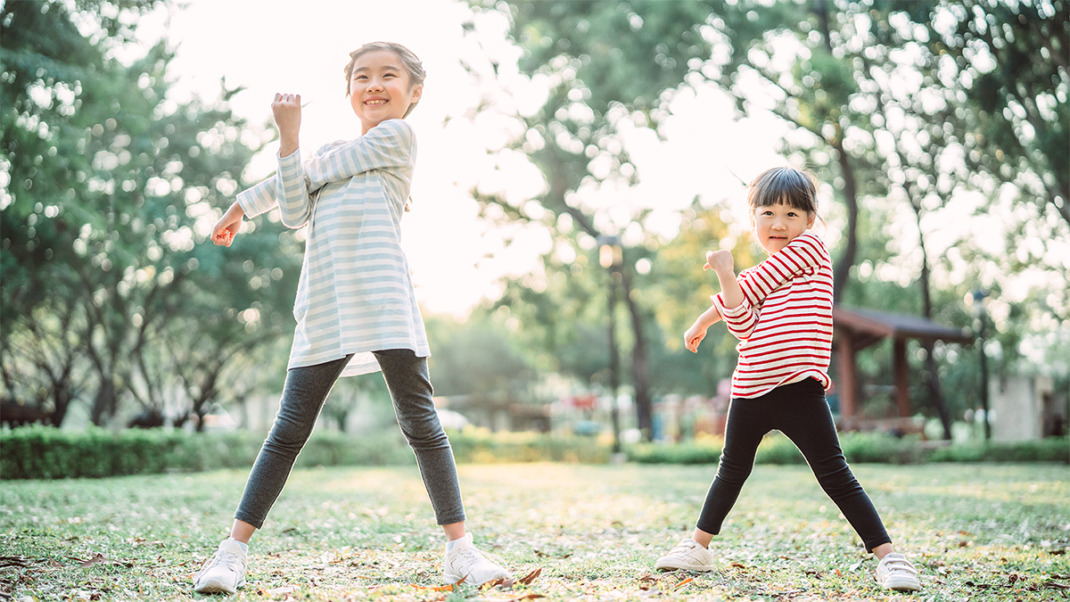China’s Community Approach to Fitness
China is enthusiastically embracing the past and the future in its approach to fitness. “There are many ancient exercises with over a thousand years of history, such as tai chi, qigong, martial arts and so on,” states Kenny Wong, president of the Asian Academy for Sports and Fitness Professionals. He describes a modern “community” approach to fitness, since Chinese people enjoy exercising with others, and fitness clubs have been introduced only recently from the West. Wong sees in fitness a melding of Chinese and Western cultures, and he finds a trend toward this cultural fusion in classes such as tai chi with martial arts and yoga and in muay Thai (Thai boxing), which has its origins on the ancient battlefields of Siam (Thailand). The government encourages fitness for all and has constructed “national fitness paths” equipped with simple fitness facilities.
There are definite age-related interests: the younger generation prefers hip-hop and street dance, while older adults favor more traditional exercises. Belly dancing has gained in popularity, with women’s desire for “femininity” as a motivating factor. Indoor cycling is also quite popular, even though, as Wong says, “with the modernization of China, it is no longer a ‘bicycle country.’”
Yoga has always been popular and is still going strong, while Pilates has slowly been gaining in recognition and popularity since it was introduced to the general public in 2003. Mat work is most common, but as Pilates equipment manufacturers enter the fitness market, that aspect is expected to become more well-known and practiced.
Personal training is still in the development stage, although demand is increasing as more people join clubs. In a 2007 industry report, 68% of the clubs in Beijing reported offering personal training, which represented a 7.3% increase over 2006 and is attributed to education and awareness about healthy living. As demand goes up, trainers are required to increase their knowledge and diversity, with some starting to specialize and use small training tools such as bands and stability balls. The interest in personal training is strongest in Shanghai and Beijing.
Unfortunately, one trend China shares with other countries is the obesity epidemic, particularly in children and adolescents. This is believed to be related to China’s “one family, one child” policy; to the propensity for fast food adopted from the West; and to the sedentary lifestyle changes that accompany advances in technology.
In China’s holistic culture, there is an emphasis on harmony and balance, so there is a belief in exercise for the outer body and in traditional medicine, massage or reflexology for the inner body. There are also gender differences: men are more inclined to enjoy resistance training, while women care more for aerobic group exercise as a way to lose weight. However, both genders want to relieve stress and have healthy bodies and good figures and physiques. Overall, the biggest motivating factor for participating in exercise is two-fold—health and looks!
With current worldwide economic challenges, the Chinese fitness industry is expected to grow steadily, but it’s more likely to grow from locally owned clubs, while overseas investors are expected to play a more conservative role.
This column explores the activities and fitness trends of IDEA members around the world. Take a free vicarious trip every month by tuning in here.
Alexandra Williams, MA
Alexandra Williams has taught fitness for 17 years and has a master’s degree in agency counseling, with an emphasis on marriage and family. Her professional training has forced her to scrutinize her own value system, especially as she attempts to raise ethical children. The author wishes to thank Jack Raglin and Jim Gavin for their helpful insights and suggestions.




